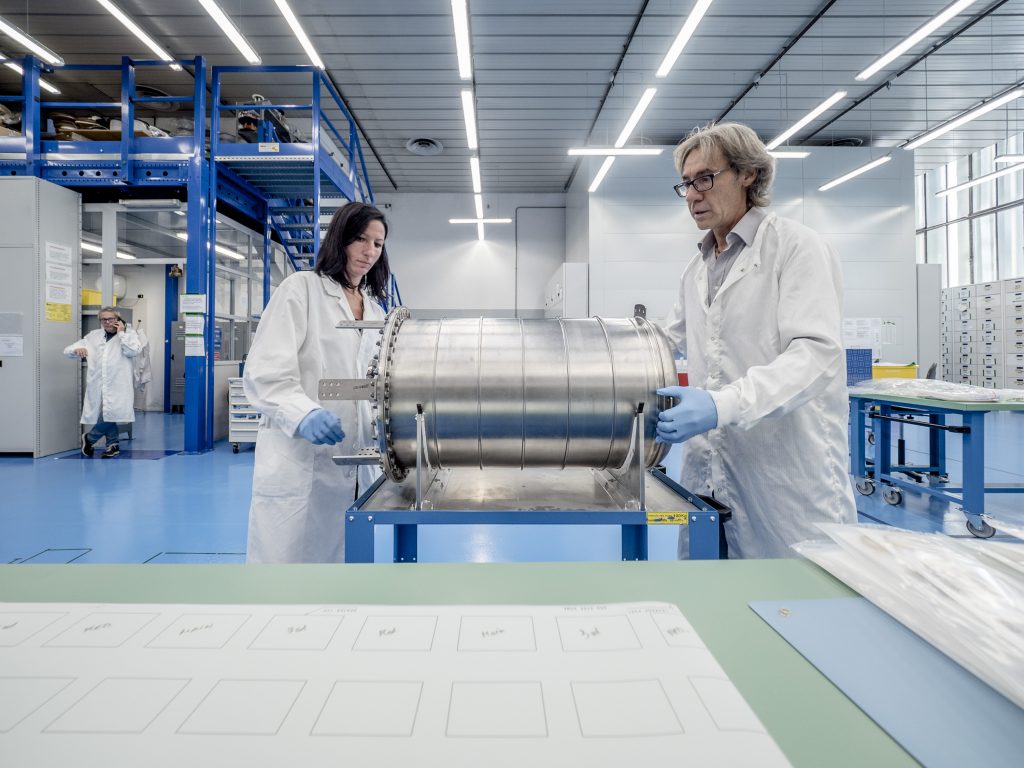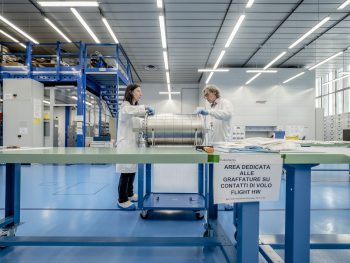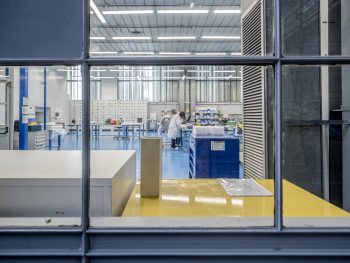In a series of blog posts based on images taken at Thales Alenia Space building facility in Turin, Italy, we will now have a look at the water tanks in Orion’s second European Service Module – the one that will provide power and life-support to up to four astronauts.
The tank in this picture is made of titanium and around 50 cm in diameter and 90 cm long. It holds 70 l of drinking water for the astronauts that will fly through space inside Orion. This water tank is one of four that each European Service Module for Orion holds, bringing the total potable water to 280 l for each mission.
The shiny alloy exterior hides the technical machinery inside. A metallic bellow made of stainless steel pushes the water down as needed to pump the water and expel it from the tank down pipes to the crew module for the astronauts.
Much of the service module is based on technology used in ESA’s Automated Transfer Vehicle (ATV) that flew to the International Space Station. ATV used Teflon bladders inside metal tanks to store its water cargo, but ATV was a much larger spacecraft and transported more, so for Orion’s service module ESA chose a metal bellow system.
Pumping without gravity
Without gravity, an open bottle of water will not empty when turned upside down. Instead, the water needs to be squeezed out like toothpaste from a tube on earth. Spacecraft use rigid water tanks and use (plastic) bladders or (metallic) bellows inside that fill with gas as needed to expel the water.
How does it work on Orion? Imagine an aluminium air duct that expands like an accordion. At launch the bellows are compressed and nitrogen gas is pumped during the mission to expand the bellow and push water out of the tank.
The stainless steel is manufactured to a thickness of just 0.15 mm and keeping the metal supple without breaking is just one of the many technical challenges on this spacecraft – and a first use of metallic bellows in spacecraft for Europe.




 Automated Transfer Vehicle page
Automated Transfer Vehicle page ATV blog archive
ATV blog archive
Discussion: 2 comments
An interesting way of transporting liquids.
This blog offers a fascinating look at the advanced technology behind the water tanks used in Orion’s European Service Module. The use of metallic bellows to pump water in a zero-gravity environment is an impressive engineering feat. It’s interesting to compare this with FRP water tanks, which are commonly used on Earth for their corrosion resistance and durability. While FRP tanks excel in terrestrial applications, the unique challenges of space clearly require innovative solutions like these titanium tanks. Thanks for sharing this insightful post!